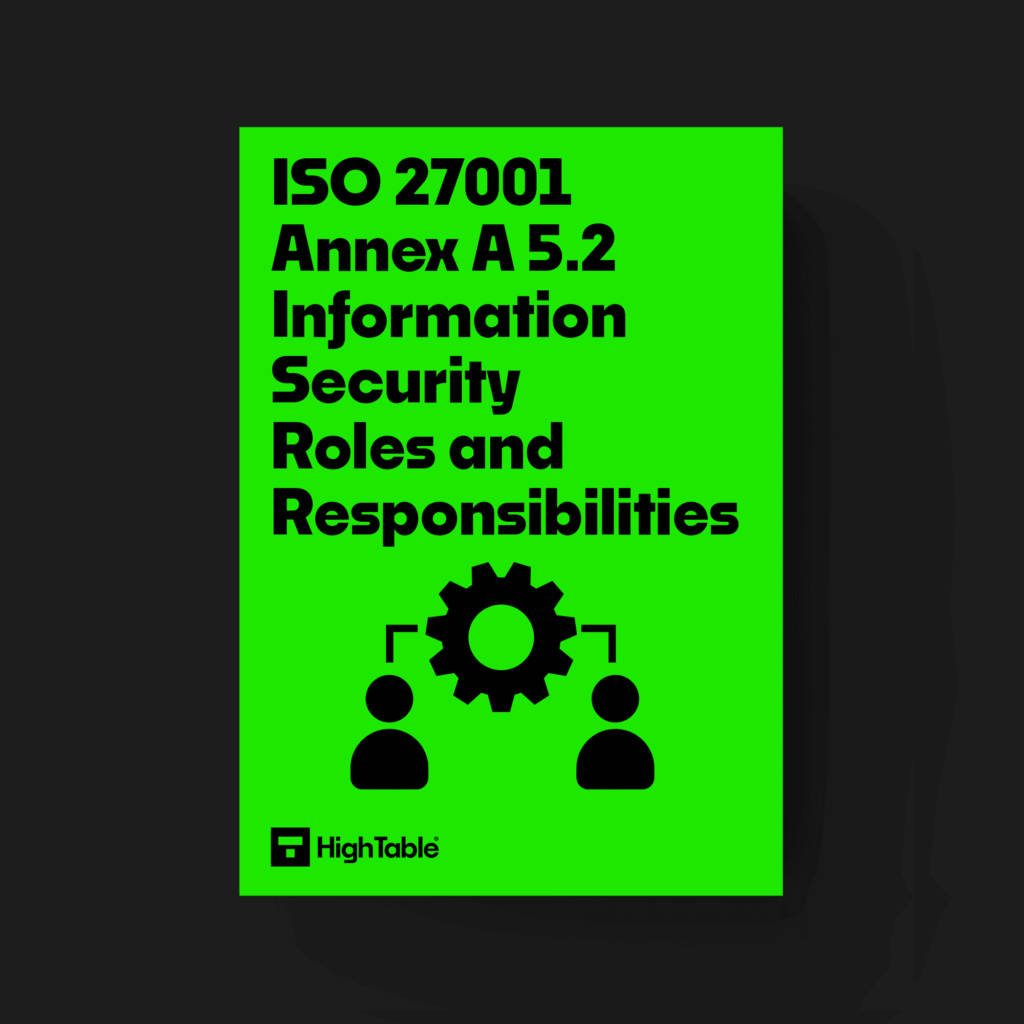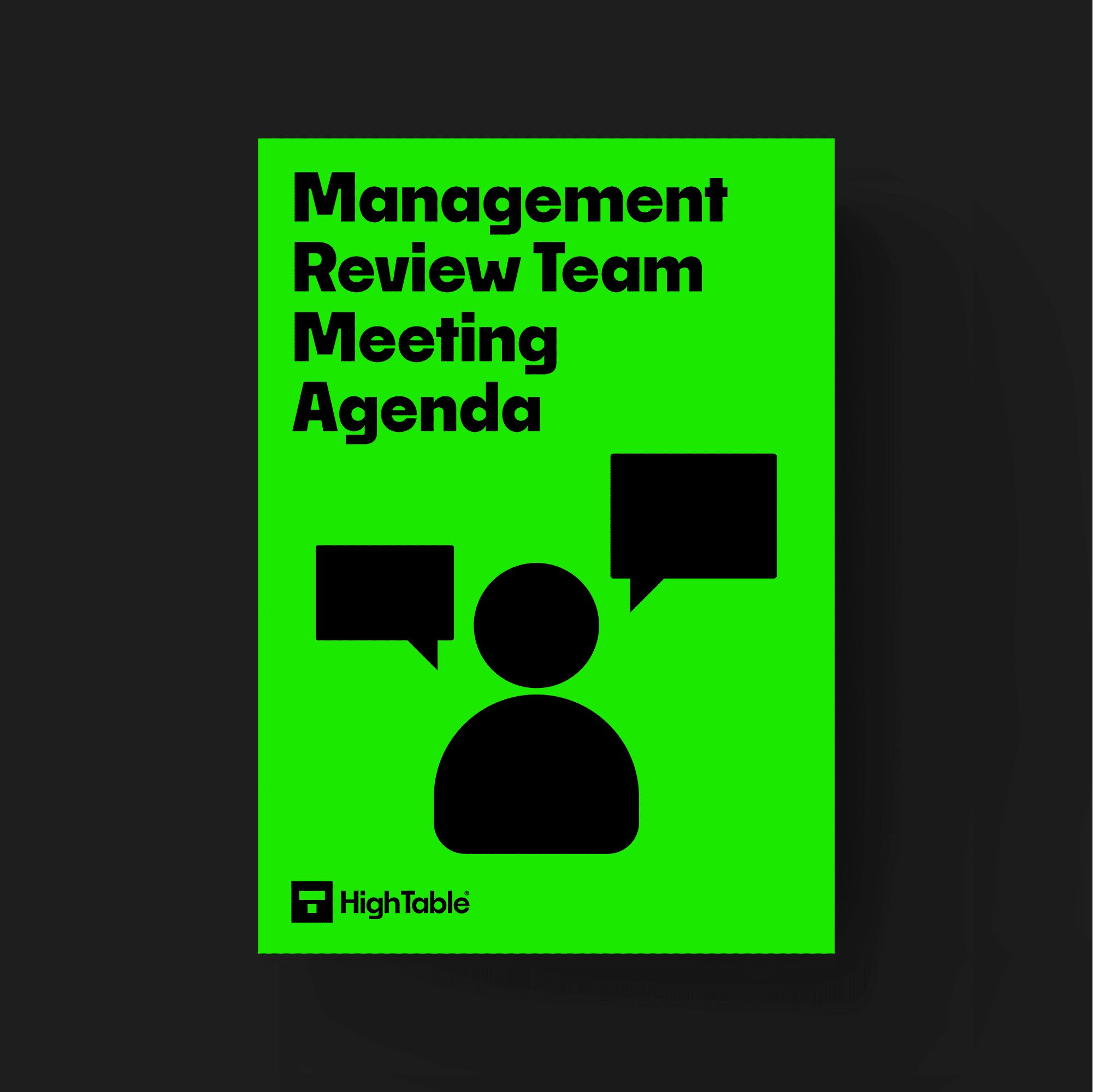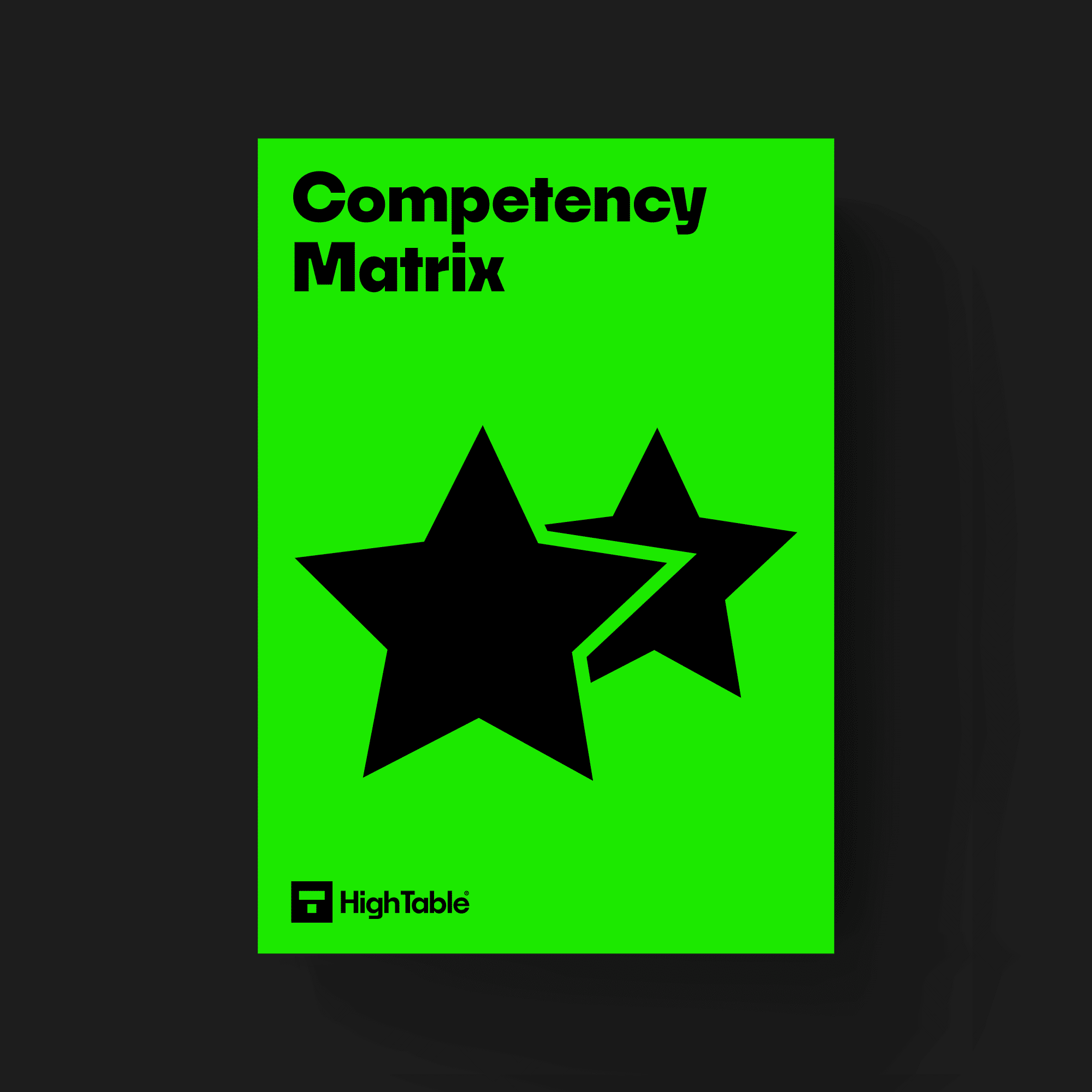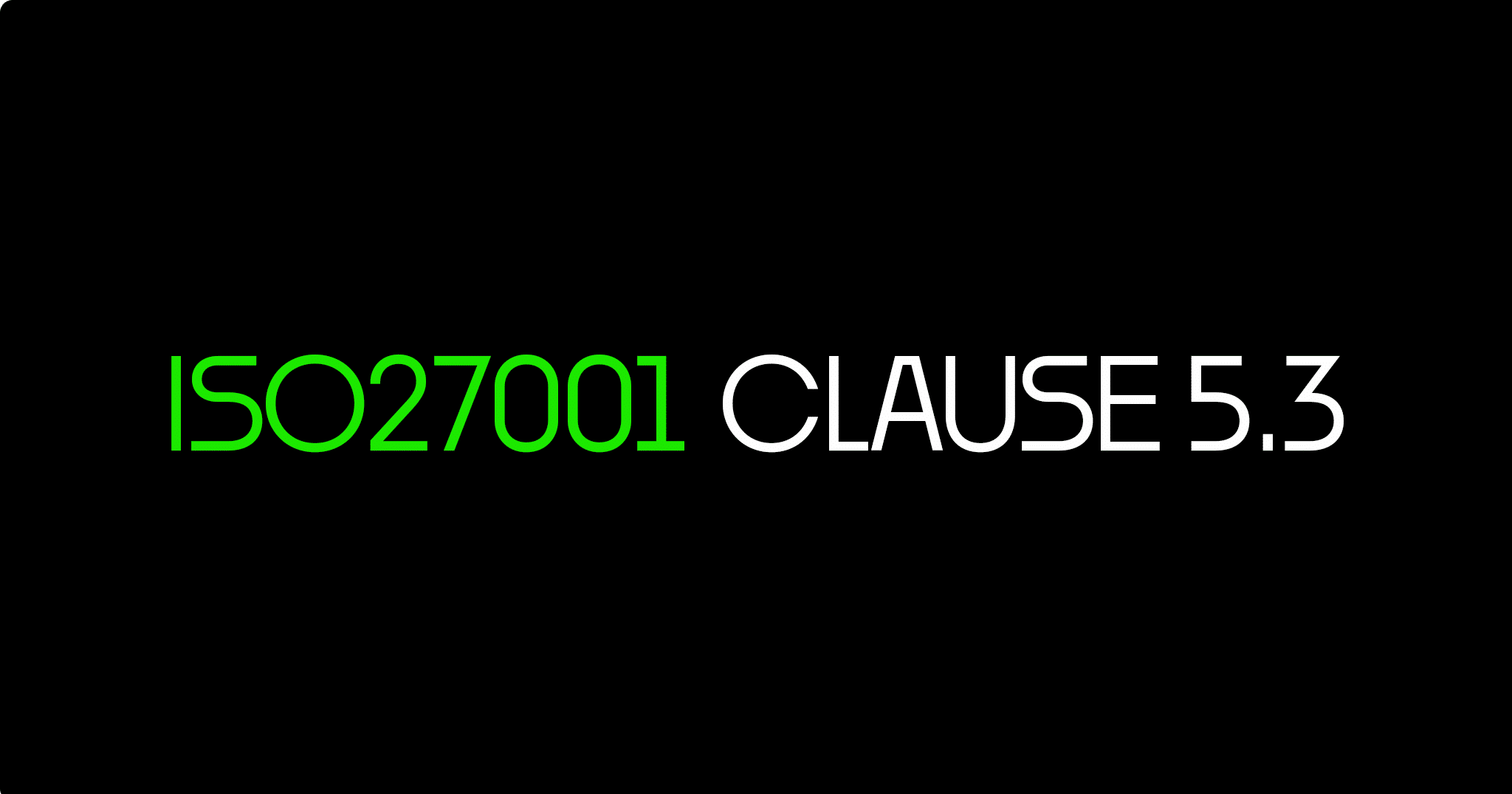Table of contents
ISO 27001 Organisational roles, responsibilities and authorities
In this ultimate guide to ISO 27001 Clause 5.3 Organisational Roles, Responsibilities and Authorities you will learn
- What is ISO 27001 Clause 5.3
- How to implement ISO 27001 Clause 5.3
I am Stuart Barker, the ISO 27001 Ninja and author of the Ultimate ISO 27001 Toolkit.
With over 30 years industry experience I will show you what’s new, give you ISO 27001 templates, show you examples, do a walkthrough and show you how to implement it for ISO 27001 certification.
Watch the Tutorial
Watch How to Implement ISO 27001 Clause 5.3 Organisational Roles, Responsibilities and Authorities
What is ISO 27001 Clause 5.3?
ISO 27001 Clause 5.3 is an ISO 27001 control that requires you to define roles and responsibilities relevant to your information security management system (ISMS) and allocate them to people.
ISO 27001 Clause 5.3 Purpose
The purpose of ISO 27001 clause 5.3 is to make sure you have defined, assigned and communicated the roles and responsibilities that you need to run your information security management system to people. This will ensure that the management system is effective.
ISO 27001 Clause 5.3 Definition
The ISO 27001 standard defines ISO 27001 clause 5.3 as:
Top management shall ensure that the responsibilities and authorities for roles relevant to information security are assigned and communicated within the organisation.
Top management shall assign the responsibility and authority for:
a) ensuring that the information security management system conforms to the requirements of this document
ISO 27001:2022 Clause 5.3 Organisational roles, responsibilities and authorities
b) reporting on the performance of the information security management system to top management.
ISO 27001 Clause 5.3 Requirement
The requirement for ISO 27001 Clause 5.3 Organisational Roles, Responsibilities and Authorities is to make sure that roles, responsibilities and appropriate authority is assigned to people and that this is communicated. We document this in the ISO 27001 Roles and Responsibilities document.
We need to make sure that responsibility is assigned to someone for ensuring the standard is met and for reporting on the effectiveness and performance of the information security management system to the business leaders, which they refer to as ‘top management’.
ISO 27001 Templates
ISO 27001 templates have the advantage of being a massive boost that can save time and money so before we get into the implementation guide we consider these pre written templates that will sky rocket your implementation.
The ISO 27001 Roles and Responsibilities document fully satisfies the requirements of ISO 27001 Clause 5.3 and is pre written with common examples. Available as individual download it is also part of the internationally best selling and award winning ISO 27001 Toolkit.
ISO 27001 Clause 5.3 Implementation Guide
Can one person hold more than one role?
Yes, as long as you take into account the requirement to remove conflict of interest and implement segregation of duty.
Identify the roles that you need
You identify the roles that you need to implement, run and manage your information security management system. To do this you would either take a list of known roles or you would work out what needs doing and the roles that you need to support that.
Example roles and responsibilities in the information security management system include:
- CEO
- senior leadership team
- management team
- information security manager
- business continuity manager
- Management Review Team
- third party supplier manager
- business continuity manager
Assign the Management Review Team
The Management Review Team should be made up of one representative of each of the in scope areas and those representatives should have an assigned deputy. In addition, at least one member of the senior management team and leadership team is part of this Management Review Team.
Document the Management Review Team in the Information Security Roles Assigned and Responsibilities and document that it has responsibility for overseeing the Information Security Management System.
This group reports to the board and has board representation and certain board designated authority for decision making.
The Management Review Team meeting should meet at least quarterly and follow the agenda as defined in the standard.
Typical duties of the Management Review Team include:
- Approval and sign off of policy
- Approval and sign off of processes
- Risk Management Oversight
- Continual Improvement Oversight
- Performance Evaluation of the Information Security Management System (ISMS)
Allocate people to roles
For each of the roles that you have identified that you need you will allocate that role to someone in the organisation. Roles can be assigned to people outside the organisation if it is practicable and applicable to you.
Here you will take note to ensure that the people that you allocate are competent to perform the role (ISO 27001 Clause 7.2 Competence) and that you have not introduced any conflict of interest (ISO 27001 Annex A Control 5.3 Segregation of duties)
Document Roles and Responsibilities
Document the Information Security Roles Assigned and Responsibilities and set out the roles and responsibilities with allocated resource.

Implement Management Reviews
Implement a Management Review Team with representatives from across the business and ensure meetings follow the structured Management Review Team Agenda.

Document Competence
Document a Competency Matrix to capture the core competencies and training requirements of staff in relation to information security.

How to pass an audit of ISO 27001:2022 Clause 5.3
To pass an audit of ISO 27001 Clause 5.3 you are going to
- Decide what roles you need
- Allocate roles to people
- Ensure people are competent to perform the role
- Implement a Management Review Team
- Document it
What the auditor will check
The audit is going to check a number of areas for compliance with Clause 5.3. Lets go through them:
That you have documented roles and responsibilities
This is the easiest one for them to check. They want to see that roles and responsibilities have been defined and allocated. The easiest way is to use the ISO 27001 Roles and Responsibilities Template
The main roles they want to see documented are the information security manager and the management review team.
That people allocated are still in the organisation
This is an easy one for them as most people do not keep their documentation up to date and as a result there will be people documented as being allocated to roles that no longer work in the organisation.
That people are competent to perform the role
It isn’t enough to document and allocate roles. The roles that are allocated need to be allocated to people that are competent to perform the role. This not a tick box and documentation exercise, it is about getting the management system operating effectively with people that are experienced and know what they are doing.
ISO 27001 Clause 5.3 FAQ
The changes to ISO 27001 clause 5.3 for the 2022 update are minor at best. Changing the word ‘International Standard’ to the word ‘document’ and adding clarification that communication is within the organisation as was always implied but never said out right. Nothing material.
Senior management are responsible for ensuring that ISO 27001 Clause 5.3 is implemented and maintained.
Other than your ISO 27001 certification requiring it, the following are benefits of implementing ISO 27001 Annex A 5.3:
Improved security: You will have an effective information security management system that is being ran by people competent to perform the roles
Reduced risk: You will reduce the risk to your information security management system by identifying relevant people with the relevant skills to ensure it is effective
Improved compliance: Standards and regulations require roles and responsibilities to be documented, in place and allocated to competent people.
Reputation Protection: In the event of a breach having effectively allocated people to the management system will reduce the potential for fines and reduce the PR impact of an event
After any significant change to the organisation, any significant change to personel and at least annually.
The approaches to monitoring the effectives of the ISO 27001 Clause 5.3 include:
Internal audit of the documented roles and responsibilities
External audit of the documented roles and responsibilities
Review of anomalies in operation of the information security management system (ISMS)


